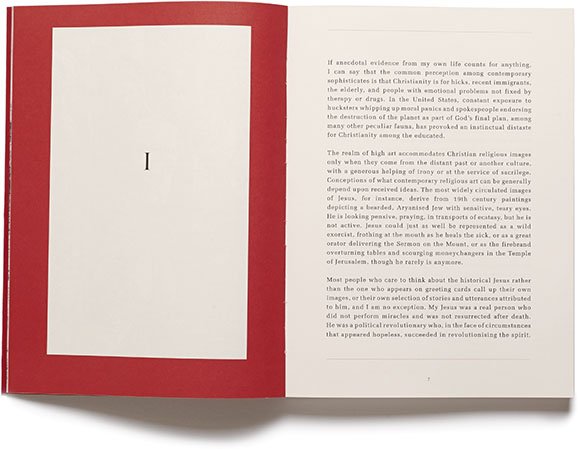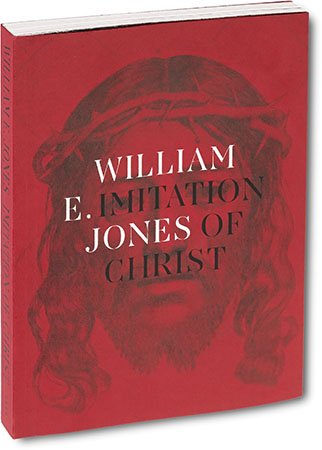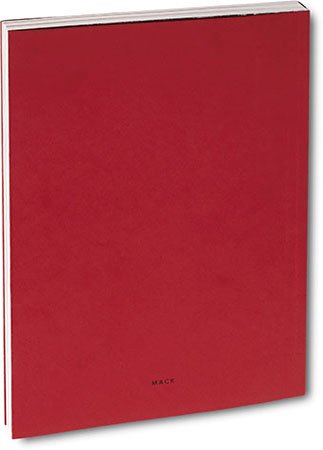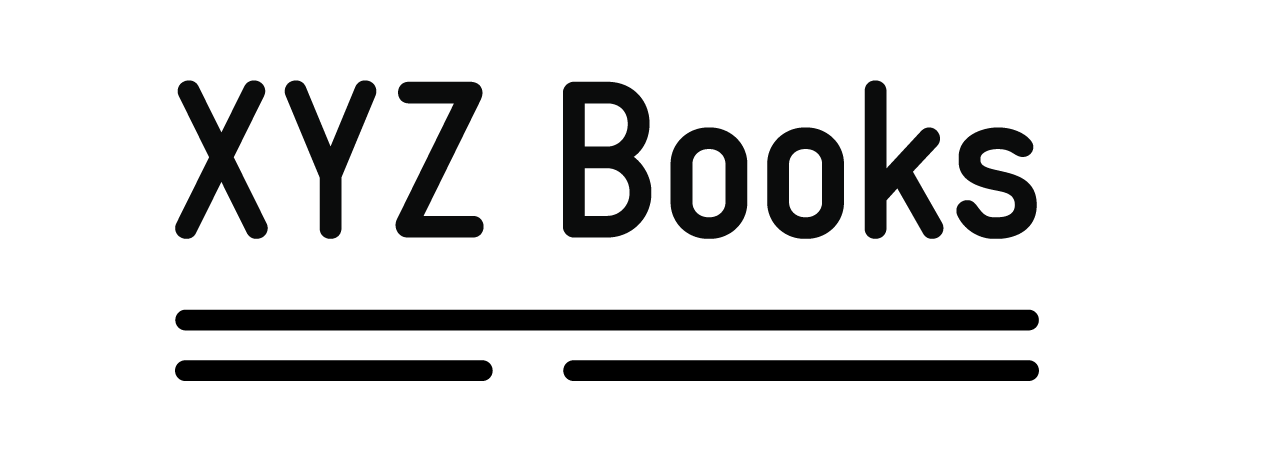 Image 1 of 10
Image 1 of 10

 Image 2 of 10
Image 2 of 10

 Image 3 of 10
Image 3 of 10

 Image 4 of 10
Image 4 of 10

 Image 5 of 10
Image 5 of 10

 Image 6 of 10
Image 6 of 10

 Image 7 of 10
Image 7 of 10

 Image 8 of 10
Image 8 of 10

 Image 9 of 10
Image 9 of 10

 Image 10 of 10
Image 10 of 10











Imitation of Christ / William E. Jones
“My Jesus was a real person who did not perform miracles and was not resurrected after death. He was a political revolutionary who, in the face of circumstances that appeared hopeless, succeeded revolutionising the spirit.” William E. Jones
This illustrated essay, by US artist William E. Jones, was born from a collection of images selected from the Hammer Museum archive in LA. Jones unearthed a striking photograph by Pedro Meyer of a wounded guerrilla fighter in Nicaragua during the early 80s. This image became a prism for his selection of a further 45 images from the archive, ranging from Renaissance and Baroque prints to documentary photographs, modern Latin American art and rare books.
This hybrid essay, built from both text and image, confronts two conflicting questions: how is it possible to make an image of revolution, and how is it possible to make a religious image? Examining the parallels between images of revolution and religion, Jones explores connections between images inspired by the life of Jesus across history, and documents that are spawned from moments of revolution: the Paris Commune of 1871, Nicaragua's revolution 1979; the writing of Soviet spy Anthony Blunt in 1940.
The materials were drawn from the collection of the Grunwald Center for the Graphic Arts at the Hammer Museum and from the Charles E. Young Research Library Department of Special Collections, for the Houseguest series with the Hammer Museum where artists are invited to curate an exhibition based on the museum’s and UCLA’s diverse collection.
“My Jesus was a real person who did not perform miracles and was not resurrected after death. He was a political revolutionary who, in the face of circumstances that appeared hopeless, succeeded revolutionising the spirit.” William E. Jones
This illustrated essay, by US artist William E. Jones, was born from a collection of images selected from the Hammer Museum archive in LA. Jones unearthed a striking photograph by Pedro Meyer of a wounded guerrilla fighter in Nicaragua during the early 80s. This image became a prism for his selection of a further 45 images from the archive, ranging from Renaissance and Baroque prints to documentary photographs, modern Latin American art and rare books.
This hybrid essay, built from both text and image, confronts two conflicting questions: how is it possible to make an image of revolution, and how is it possible to make a religious image? Examining the parallels between images of revolution and religion, Jones explores connections between images inspired by the life of Jesus across history, and documents that are spawned from moments of revolution: the Paris Commune of 1871, Nicaragua's revolution 1979; the writing of Soviet spy Anthony Blunt in 1940.
The materials were drawn from the collection of the Grunwald Center for the Graphic Arts at the Hammer Museum and from the Charles E. Young Research Library Department of Special Collections, for the Houseguest series with the Hammer Museum where artists are invited to curate an exhibition based on the museum’s and UCLA’s diverse collection.
“My Jesus was a real person who did not perform miracles and was not resurrected after death. He was a political revolutionary who, in the face of circumstances that appeared hopeless, succeeded revolutionising the spirit.” William E. Jones
This illustrated essay, by US artist William E. Jones, was born from a collection of images selected from the Hammer Museum archive in LA. Jones unearthed a striking photograph by Pedro Meyer of a wounded guerrilla fighter in Nicaragua during the early 80s. This image became a prism for his selection of a further 45 images from the archive, ranging from Renaissance and Baroque prints to documentary photographs, modern Latin American art and rare books.
This hybrid essay, built from both text and image, confronts two conflicting questions: how is it possible to make an image of revolution, and how is it possible to make a religious image? Examining the parallels between images of revolution and religion, Jones explores connections between images inspired by the life of Jesus across history, and documents that are spawned from moments of revolution: the Paris Commune of 1871, Nicaragua's revolution 1979; the writing of Soviet spy Anthony Blunt in 1940.
The materials were drawn from the collection of the Grunwald Center for the Graphic Arts at the Hammer Museum and from the Charles E. Young Research Library Department of Special Collections, for the Houseguest series with the Hammer Museum where artists are invited to curate an exhibition based on the museum’s and UCLA’s diverse collection.
2013
Mack Books
128 pages
17 x 23 cm
Silkscreen paperback
Offset Print
First Edition
ISBN 9781907946394
